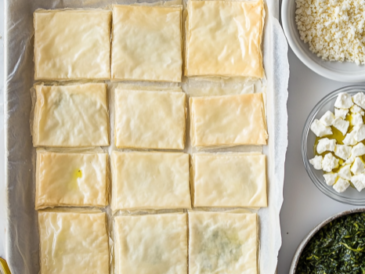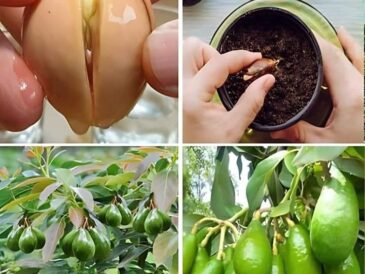When we do laundry, we often seek that perfect combination of clean, fresh, and brilliantly white clothes. Traditional whitening products may achieve these results, but many contain harsh chemicals that can damage fabrics and pollute the environment. Bleach, for example, is widely used but is filled with harmful agents. Thankfully, natural alternatives offer effective whitening without the drawbacks. Discover these eco-friendly solutions to achieve dazzlingly bright laundry while keeping things green!
Part 1: Powerful Natural Whitening Agents for Laundry
Here’s a closer look at some top natural whitening agents you can add to your laundry routine.
1. Percarbonate: The Eco-Friendly Bleach Alternative
Percarbonate, also known as sodium percarbonate, is a potent whitening agent that works wonders as a natural bleach substitute. It’s environmentally friendly and just as effective, brightening your whites without releasing harmful chemicals.
- How to Use: Add one tablespoon of percarbonate to your washing machine, along with your liquid detergent.
- For Stubborn Stains: Increase to two tablespoons for heavily stained or dingy fabrics.
- Optimal Settings: Select the hot water setting and start the wash cycle. The heat activates percarbonate, maximizing its whitening power.
2. Hydrogen Peroxide: A Gentle, Green Option
Hydrogen peroxide is a fantastic natural bleaching agent that whitens clothes while being safe for the planet. Use it sparingly for best results.
- How to Use: Add one tablespoon of hydrogen peroxide to the detergent compartment in your washer.
- Cycle Settings: Simply begin the wash cycle. The oxygen-based formula of hydrogen peroxide breaks down stains and dullness without damaging fibers.
3. Lemon Juice: Nature’s Fresh-Scented Brightener
Lemon juice isn’t just for cooking—it’s also a brilliant, gentle whitener for laundry. Its natural acids lift stains and enhance brightness while leaving a fresh citrus scent.
- How to Use: Add one tablespoon of lemon juice to the detergent compartment.
- For Deep Stains: Increase the quantity as needed for more yellowed or heavily stained clothes.
- Cycle Settings: Run the laundry as usual. Lemon juice not only brightens your clothes but also gives them a light, refreshing fragrance.
Part 2: Top Tips for Using Natural Whitening Agents Effectively on Different Fabrics
Different fabrics respond to natural whitening agents in unique ways, so let’s dive into the best practices for each fabric type to ensure that every piece in your laundry looks its best.
1. Cotton and Linen: Robust Fabrics for All Agents
Cotton and linen are durable, natural fibers that can handle stronger whitening agents without damage. Percarbonate, hydrogen peroxide, and lemon juice work beautifully with these fabrics, giving them a bright, refreshed look with every wash.
- For Deep Cleaning: Use two tablespoons of percarbonate or a combination of percarbonate and hydrogen peroxide for deeply stained cotton or linen items.
- Caution: Avoid using lemon juice directly on colored linens or cottons, as it may cause fading.
2. Synthetic Fabrics: Lighten Up on the Lemon Juice
Synthetic fabrics like polyester and nylon don’t absorb stains as deeply, so they require less intensive treatment. Stick with one tablespoon of hydrogen peroxide or percarbonate to lift stains gently.
- Hydrogen Peroxide Tip: Hydrogen peroxide is ideal for synthetics because it whitens without leaving residue.
- Avoid High Heat: Synthetic fibers may break down under extreme heat, so use warm rather than hot water when washing with whitening agents.
3. Delicate Fabrics: Stick to Mild Agents
Delicate fabrics like silk and wool require special care to avoid damage. Hydrogen peroxide is gentle enough to use in very small amounts, but avoid using percarbonate, as it’s too harsh for delicate fibers.
- How to Use: Dilute a teaspoon of hydrogen peroxide with an equal part of water and add it to a gentle cycle.
- Alternative: For extra care, soak delicates in cool water with a few drops of lemon juice before handwashing to lift minor discoloration.
4. Mixed-Color Fabrics: Test Before You Treat
For garments with both light and dark sections, use natural whiteners cautiously, as some agents can cause colors to fade.
- Lemon Juice and Hydrogen Peroxide: These are safe when diluted, but always do a patch test on a hidden area first.
- Skip Percarbonate: It can be too strong for mixed colors and may cause uneven fading.
Bright Whites, Naturally!
Incorporating natural whitening agents into your laundry routine is an easy and eco-friendly way to keep your clothes looking fresh and bright without the use of harsh chemicals. From tough cotton to delicate silk, these agents work on a wide variety of fabrics, ensuring your wardrobe stays vibrant and clean. Embrace these natural methods, and your laundry routine will be both effective and kind to the planet!




